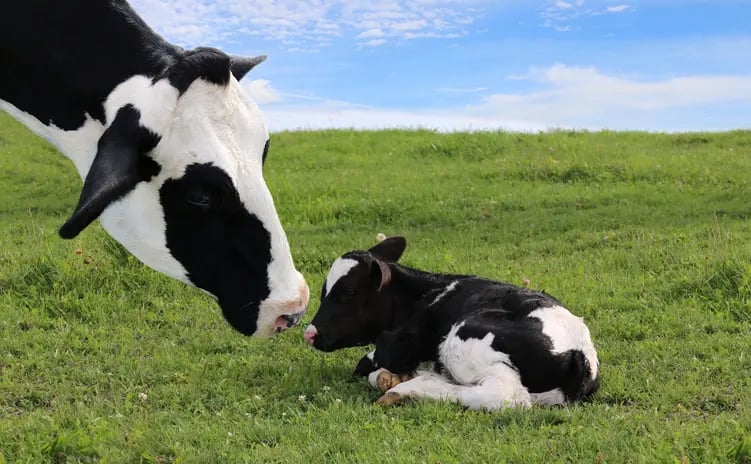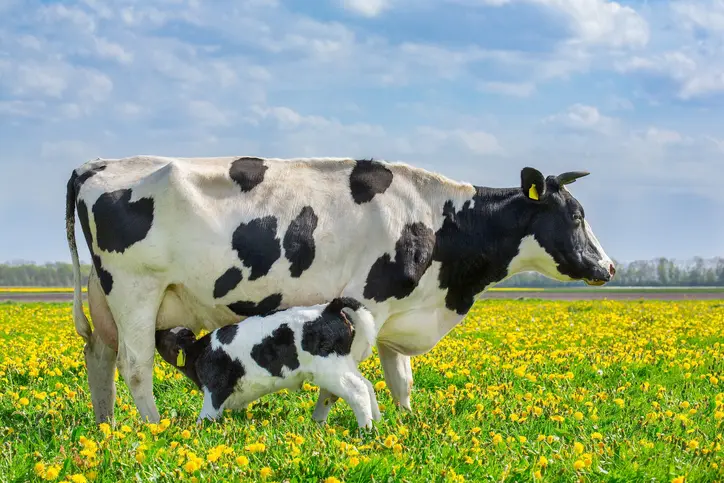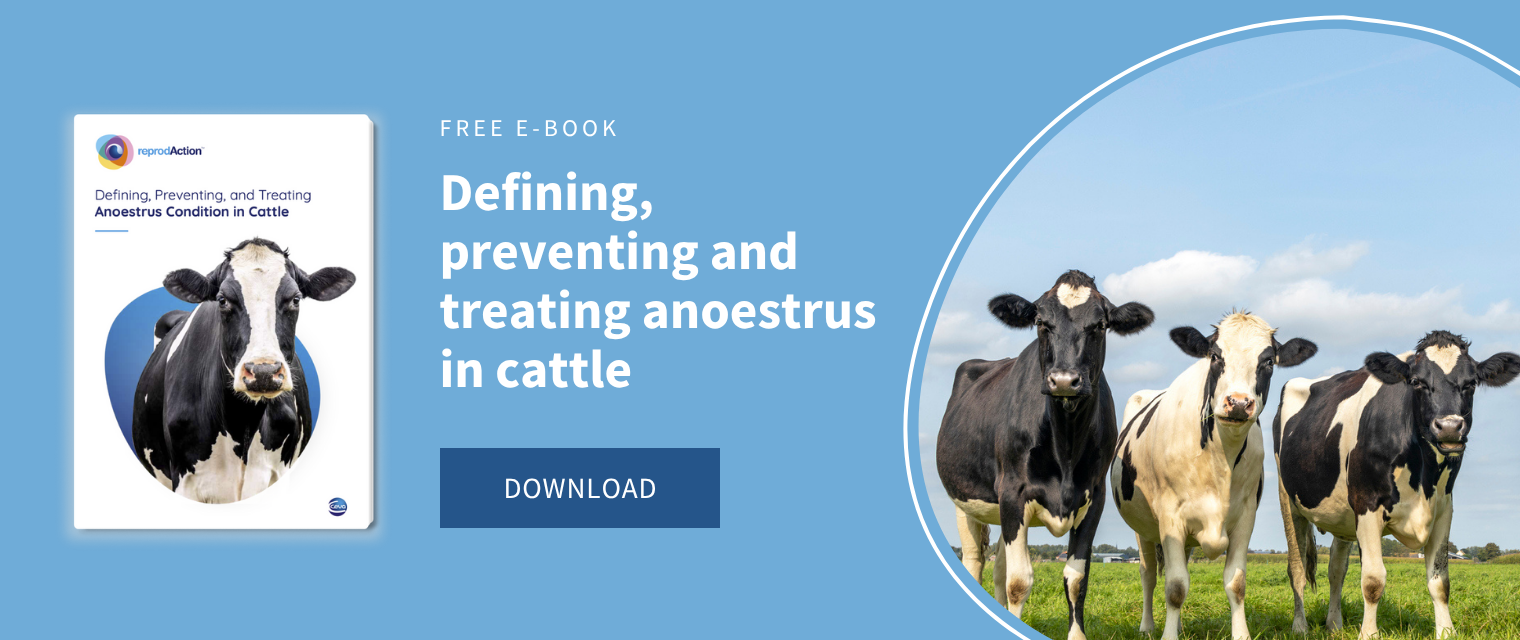The establishment of a new pregnancy in a dairy farm has multiple financial benefits; at the end of the pregnancy each cow initiates a new lactation and brings to the farm new calves. The calves, could either enter the “fleet of heifers” needed as replacement, increasing the genetic merit of the herd, or in alternative, can be sold if either male of females of low genetic, generating cashflow.
Every extra pregnancy, reduces the costs needed to inseminate the remaining cows and heifers, reduces the feeding required for cows in low milk production, and for the dry cows; overall it improves the so-called income over feed cost (IOFC).
This last point, is justified by the fact that cows with good reproductive performances spend the majority of their lives in the most productive phases of their lactations, bringing the best conversion of feed consumed into milk.
The other great benefit from better reproductive performances is the increased longevity of cows into the herd, it is worth to remember, that the greatest cause of involuntary culling of dairy cows, is due to reproductive failure, ranging at a level fluctuating between 16% and 37% of the total involuntary culling (Dallago et al., 2021, Armengol et al., 2016, De Vries et al., 2020).
Dairy farmers invest much time and effort trying to achieve pregnancies and are quite reluctant to cull animals once they become pregnant (Grohn, Eicker et al., 1998; Grohn and Rajala-Schultz, 2000). To be noticed that, non-pregnant cows were 7.5 times more likely to be culled than pregnant cows (Grohn, Eicker et al., 1998).
How much is a pregnancy worth?
Calculating an exact value for a new pregnancy is not an easy task. Only a few studies in recent years have embarked in this journey; the first one from Albert De Vries of the University of Florida, established that the value of a new pregnancy was worth 274 US dollars (249 €), but even more importantly the study highlighted how costly can be, for a dairy producer, the loss of an established pregnancy, reaching an average of 555 $ (505 €), with this value increasing with the proceeding of the length of the pregnancy.
A more recent report from the University of Wisconsin (Cabrera et al., 2014) valued a new pregnancy at 120 days in milk on an average varying between 222 $ and 456 $ (202 and 415 €) according to the milk production of the cow, an increase in 10% in milk production brought the value of a new pregnancy almost to double the revenue that generates.
Following the same trend, the loss of a pregnancy is very costly. The cost an embryonic loss or abortion varied between 323 and 491$ (294 and 446 €) for cows of an average milk production in the first case or cows with 10% higher production from the baseline.
Inside this extensive review is also calculated the value of a “day open”, this parameter is intended as the interval which on average cows spend without conceiving starting the calculation from the end of the voluntary waiting period, and it is a very good parameter to evaluate the reproductive performances of a dairy herd of any size, the average cost for each one of these days open is ranging from 5.2US $ to 6 US $ (4.7 to 5.5 €).

What could be the benefit from improved reproductive efficiency?
Not too many studies have looked at the same figures in the European Union.
One recent report, presented at the “International Ruminant Reproduction Symposium” held in Ireland in June this year, (Wickasono et al., 2023) have evaluated the economic impact of changing the reproductive managements system for a 200-lactating cow herd in the Netherlands.
The simulation compared the results achievable from a current reproductive management, established by a recent national guideline (KNMvD, 2020), where cows are submitted for insemination using estrus detection, and after 60 days from the end of the voluntary waiting period, for non-inseminated cows, synchronization strategies are applied according to veterinary diagnosis.
This method was compared to other three methods, choosing a more systematic approach for the submission of cows for either 1st AI or re-synchronization of open cows at negative pregnancy diagnosis.
The most profitable strategy has been the one using a fertility program for 1st AI (Double-Ovsynch, Souza et al 2008), and the combination of estrous detection and re-synchronization programs for open cows. The re-synchronization program choice was based on ovarian cyclicity, evaluated by the Veterinarian, and cows were either submitted for Ovsynch if an active corpus luteum was detected in presence of a dominant follicle, or alternatively the supplementation of Progesterone in the Ovsynch protocol was used in case the cows without a good quality CL at the time of negative pregnancy diagnosis.
This combined strategy of timed AI (TAI) for 1st insemination, estrus detection for all the cows which did not conceive from the first insemination, together with a systematic allocation of cows not seen in estrus and found non pregnant at the Vet diagnosis, has demonstrated to generate an extra annual revenue for the farm of 22’000€ at the net of all the associated costs, just by improving the reproductive efficiency; clearly demonstrating how focal is the role of reproduction in farm profitability and sustainability.
Summary of the benefits produced by the improvement of herds’ reproductive performances:
- Decreased average days in milk in the lactating herd, resulting in additional milk production
- Reduction of the culling of good cows only due to reproductive failure
- More calves per year as replacements and to sell as replacements
- Improved genetic gain
- More reliable management with less variability in lengths of lactation and higher consistency in the lengths of the dry periods
Conclusions
Investing in reproductive efficiency is a decision of high return for any dairy enterprise.
The value of a new pregnancy varies between 200 to 400 €, combining the strategies which allow for high submission for insemination and consistent conception per AI, can have major impact on farm profitability.
References
Armengol and Fraile Acta Vet Scand (2018) 60:45 https://www.doi.org/10.1186/s13028-018-0399-z
Dallago G.M.;Wade, K.M.; Cue, R.I.; McClure, J.T.; Lacroix, R.; Pellerin, D.; Vasseur, E. Keeping Dairy Cows for Longer: A Critical Literature Review on Dairy Cow Longevity in High Milk-Producing Countries. Animals 2021, 11, 808. https://www.doi.org/10.3390/ani11030808
De Vries A, Marcondes MI. Review: Overview of factors affecting productive lifespan of dairy cows. Animal. 2020 Mar;14(S1):s155-s164. https://www.doi.org/10.1017/S1751731119003264 . PMID: 32024570
Grohn, Y. T., S. W. Eicker, B. Ducrocq, and J. A. Hertl. 1998. Effect of diseases on the culling of Holstein dairy cows in New York State. J. Dairy Sci. 81:966-978.
Grohn, Y. T. and P. J. Rajala-Schultz. 2000. Epidemiology of reproductive performance in dairy cows. Anim. Reprod. Sci. 60-61:605-614.
KNMvD, 2020. Richtlijn Vruchtbaarheidsbehandelingen als onderdeel van de veterinairebegeleiding van melkveebedrijven. Accessed Jun. 06, 2021. https://www.knmvd.nl/app/uploads/2021/04/Richtlijn-Vruchtbaarheidsbehandelingen_april2021.pdf
Souza AH, Ayres H, Ferreira RM, Wiltbank MC. A new presynchronization system (Double-Ovsynch) increases fertility at first postpartum timed AI in lactating dairy cows. Theriogenology. 2008 Jul 15;70(2):208-15. https://www.doi.org/10.1016/j.theriogenology.2008.03.014.
A. Wicaksono, F. Edwardes, W. Steeneveld, B.H.P. van den Borne, P. Pinho, F. Randi, H. Hogeveen, 125 Economic effect of hormone-based fertility programs in dairy farms, Animal - science proceedings, Volume 14, Issue 3, 2023, Page 509, ISSN 2772-283X, https://www.doi.org/10.1016/j.anscip.2023.03.126
About the author
Federico Randi (Ruminants Global Technical Manager)
Federico Randi is Global Technical Manager for Ruminants at Ceva Animal Health, specializing in cattle reproduction. With a Doctor of Veterinary Medicine degree “cum laude” from the University of Bologna, he focused his career on improving efficiency and sustainability of farmed animals. Randi conducts research on ruminants fertility, using technologies like Timed AI, embryo transfer, and recombinant technologies. His extensive experience includes collaborative projects with over 20 research institutions globally. He earned his PhD at University College Dublin, concentrating on fixed-time artificial insemination and embryonic maternal communication in cattle. Currently, he serves as a Board Member in the Scientific Commission of Animal Physiology for the European Federation of Animal Science (EAAP) as an Industry Representative.




Leave your comments here